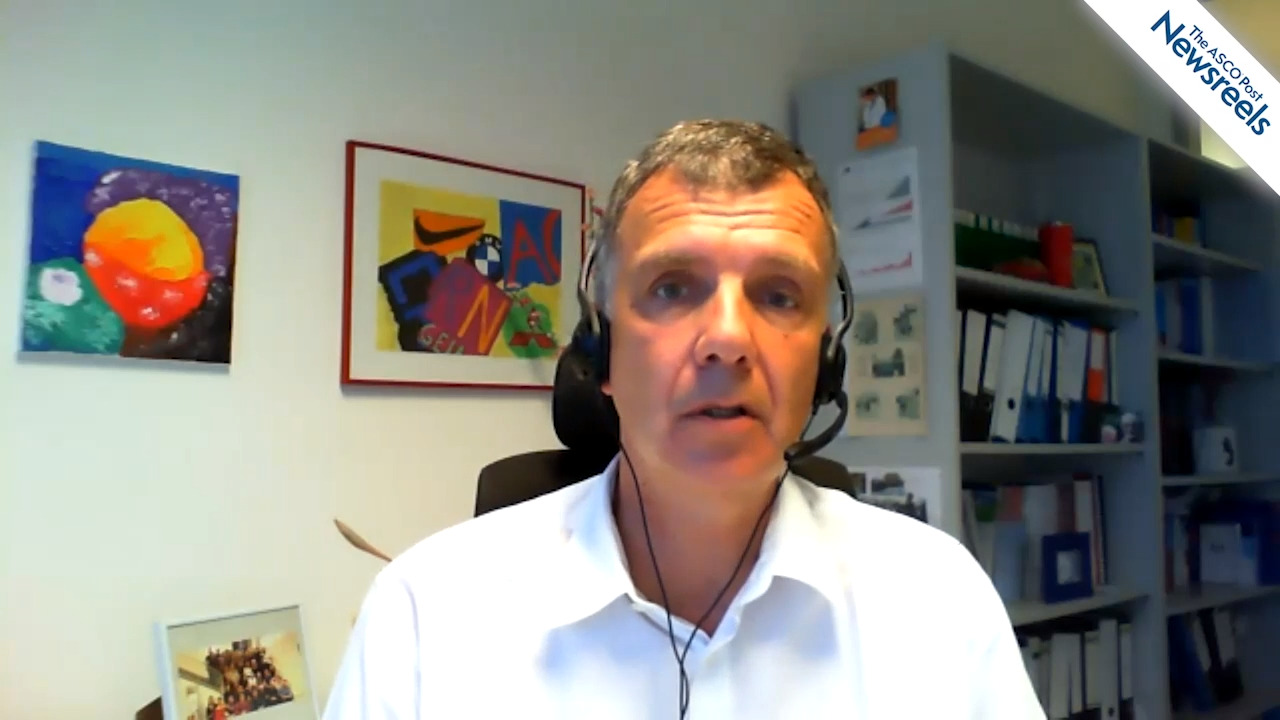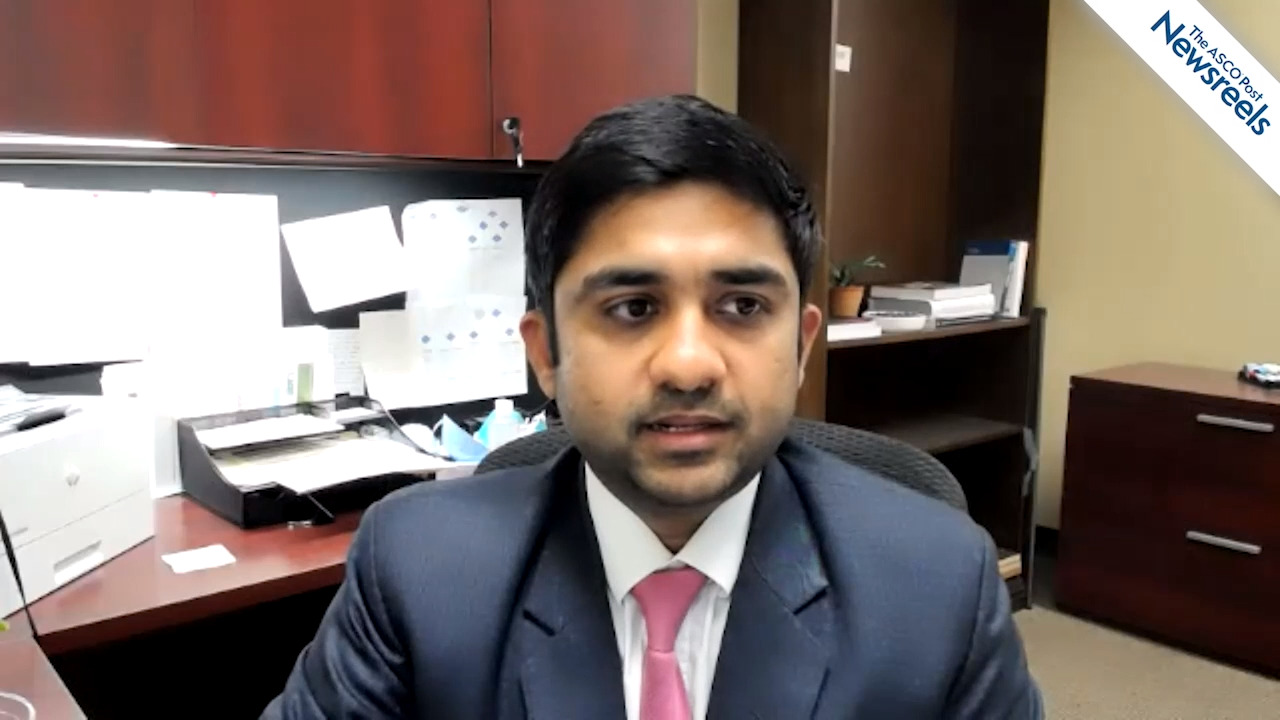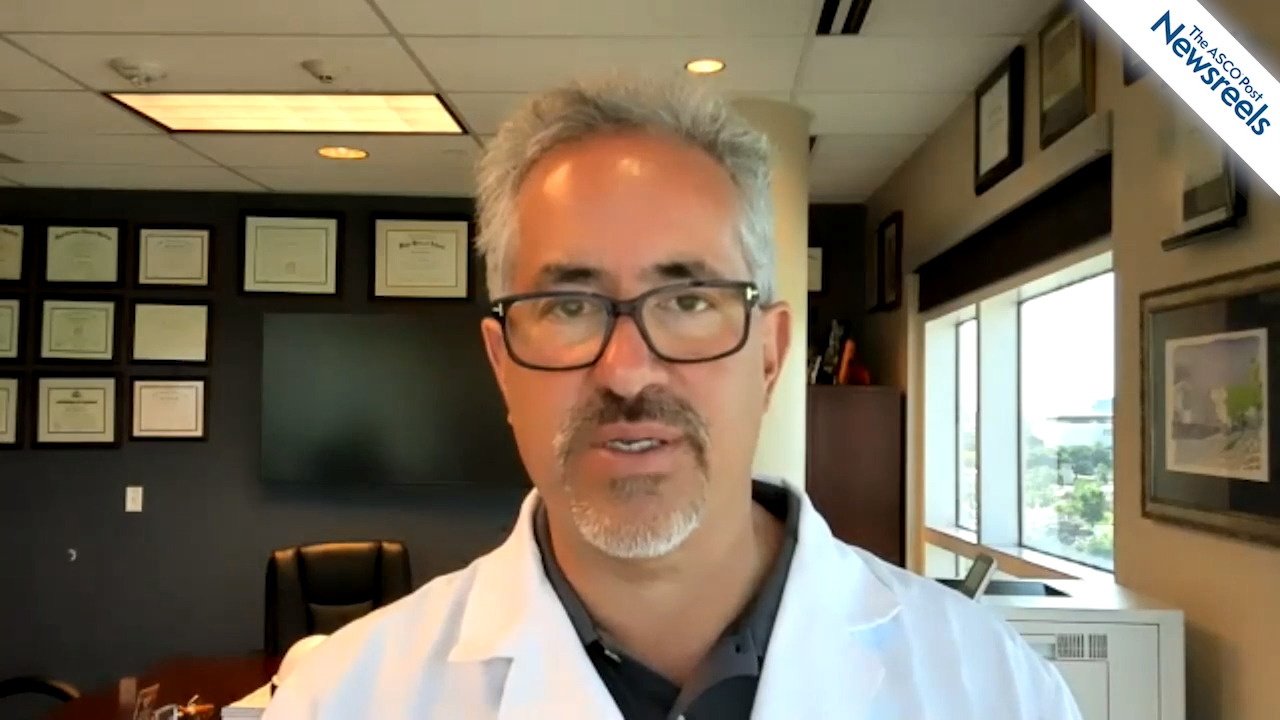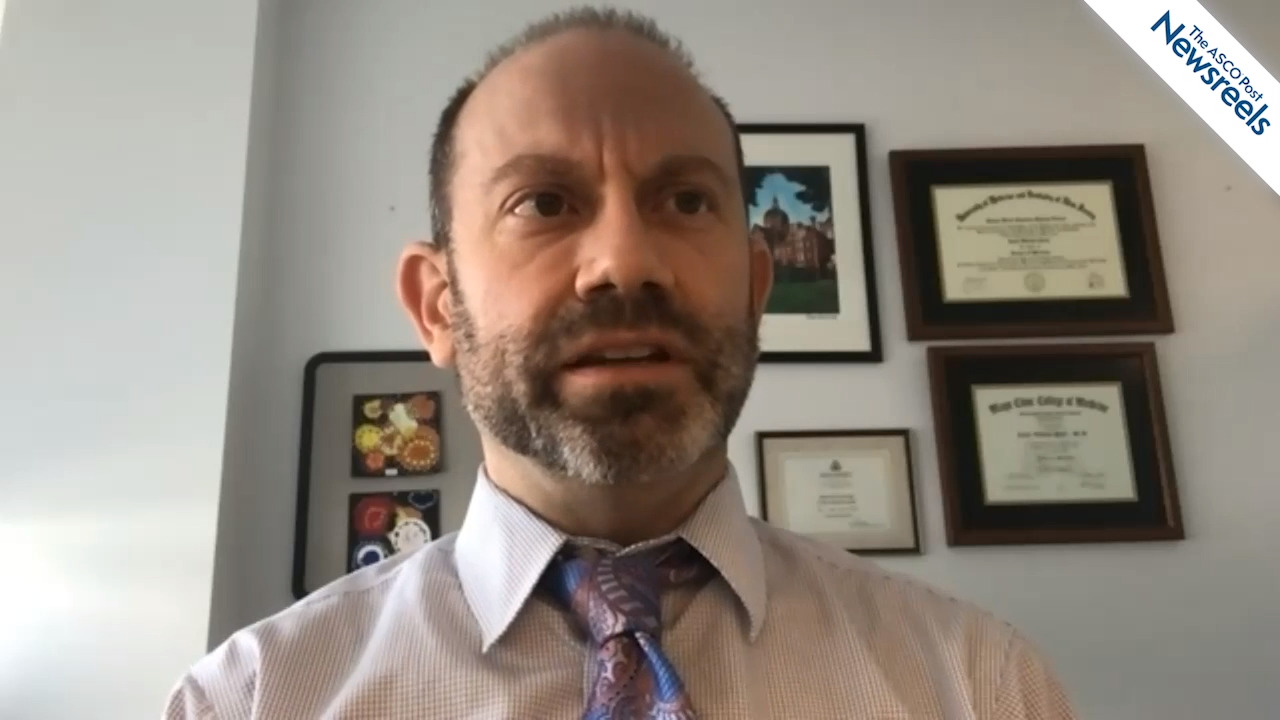Claire Harrison, MD, DM, on Myelofibrosis: Fedratinib as First-Line Therapy After Prior Ruxolitinib
EHA 2021 Virtual Congress
Claire Harrison, MD, of Guy’s and St. Thomas’ Hospital, discusses survival results from the JAKARTA and JAKARTA2 trials, which showed that fedratinib, an oral JAK2 inhibitor, significantly improved progression-free survival vs placebo as a first-line treatment for patients with myelofibrosis (Abstract S203).
The ASCO Post Staff
Martin H. Dreyling, MD, PhD, of University Hospital Munich Grosshadern Klinikum, discusses phase II results from the ELARA trial, which suggests tisagenlecleucel may be a promising immunotherapy for adults with relapsed or refractory follicular lymphoma (Abstract S210).
The ASCO Post Staff
Gaurav Goyal, MD, of the University of Alabama at Birmingham, reports on findings from a large multi-institutional database study, which showed there was no apparent difference in overall survival between R-CHOP and R-EPOCH among patients with advanced-stage MYC-rearranged, double-hit, or triple-hit diffuse large B-cell lymphoma. Further studies are needed for better risk stratification to optimize outcomes (Abstract S224).
The ASCO Post Staff
Ruben A. Mesa, MD, of UT Health San Antonio Cancer Center, discusses new findings on momelotinib, a potent JAK1, JAK2, and ACVR1 inhibitor with clinical activity against hallmark features of myelofibrosis such as anemia and splenomegaly. Results showed that transfusion independence was associated with improved overall survival in patients who had received momelotinib (Abstract S202).
The ASCO Post Staff
Keith W. Pratz, MD, of the University of Pennsylvania, discusses the outcomes of patients with acute myeloid leukemia who took part in the VIALE-A trial and were treated with venetoclax and azacitidine. The patients had achieved both composite complete remission and measurable residual disease of < 10-3 (Abstract S137).
The ASCO Post Staff
Philippe Moreau, MD, of University Hospital Hôtel-Dieu, discusses findings from the CASSIOPEIA trial, Part 1, on daratumumab maintenance vs observation in patients with newly diagnosed multiple myeloma who have been treated with bortezomib, thalidomide, and dexamethasone, with or without daratumumab, and autologous stem cell transplantation (Abstract S180).





